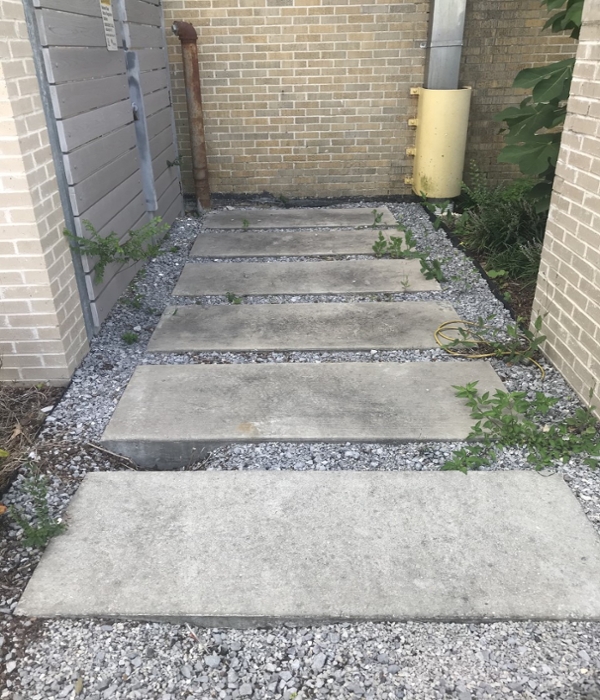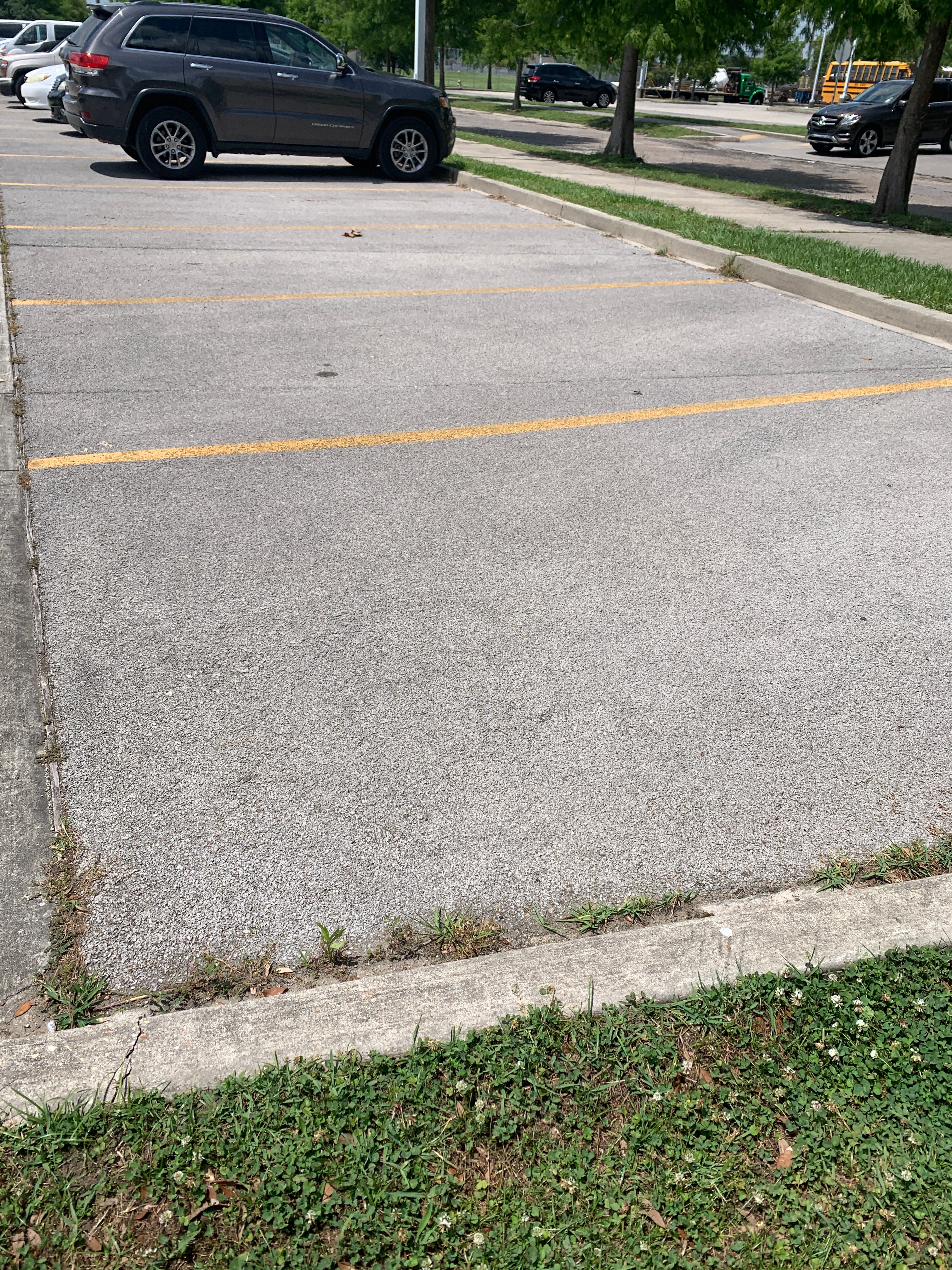Normally, rainwater is absorbed into the ground, recharging aquifers and groundwater supplies; however, most of the surfaces and pavements in New Orleans, are impermeable. Concrete, asphalt, roofing, or extremely packed grounds are all examples of impermeable surfaces, which trap water and prevent drainage. Increasing permeable surfaces, such as grass, mulch, sand, and bricks allow water to drain, and oftentimes, help purify it. Certain terrains are better suited for absorbing and cleaning large amounts of water, such as gravel areas and gardens filled with water-loving, native plants. Infrastructure that incorporates permeable surfaces, such as green roofs, rain gardens, and pervious concrete is used to influence water cycles and help mitigate some storm-water damage, even at a small scale.
Xavier has existing grey and green infrastructure that assist with stormwater management. We are planning to incorporate more green spaces designed to absorb, and store water. They are incredibly important in controlling stormwater runoff. Large areas of campus are grass fields with water-loving trees, like Bald Cypresses. Campus paths in low-lying areas prone to flooding utilize grey infrastructure that consists of spaced brick pavers instead of continuous concrete paths which often make flooding worse. These pavers allow the water to drain quicker. In front of Xavier South, in our 2017 PAM II (Pedestrian Art Mall) Renovation, there is green and grey infrastructure in place to help mitigate stormwater and flooding.
To help increase our campus's management of stormwater, the Office of Sustainability is working on increasing the number of permeable surfaces and native, water-loving plants. If you have an idea for a project that could help increase permeable surfaces on campus, please contact the Office of Sustainability or fill out the project proposal form.
- A permeable pathways allows for water to drain better than it would through a concrete pathway (left).
- Water can also drain through grass, especially if the soil is not too compacted. The Bald Cypress tree also retains water (depicted in the picture to the right).


- Gravel is great at storing water, relieving some of the initial burden on New Orlean's pumping systems during the rain event. When water passes through gravel area, they can remove some of the pollutants and debris, cleaning it before returning it into the ground.
- Gravel lines the underside of the planted area as well.


- Permeable parking in the Convocation parking lots (X & W) allow for water to drain better and reduce flooding in those lots.
- Permeable parking in the Xavier South parking lot (T) allows for better water drainage.

